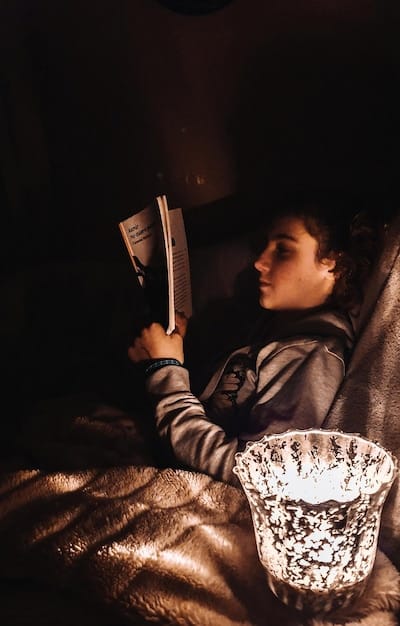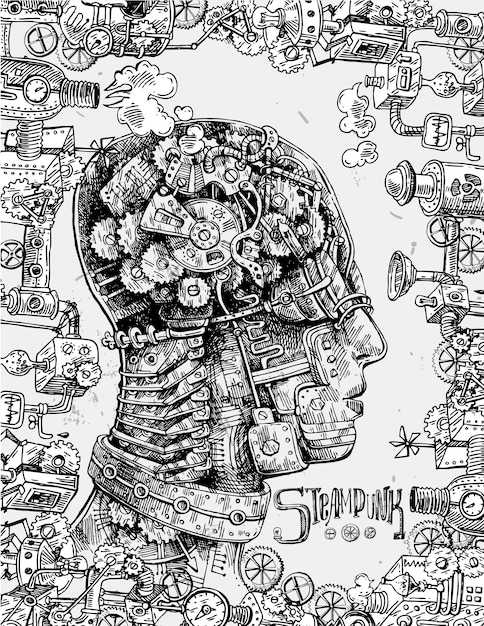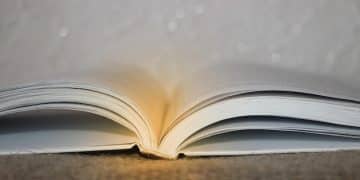Psychoanalytic Lenses: Examining Poetry in 21st Century America

A Critical Examination of the Use of Psychoanalytic Theory in Analyzing 21st-Century American Poetry reveals how this approach illuminates themes of identity, trauma, and societal anxieties, offering unique insights into the American psyche through contemporary verse.
Delving into the realm of literary criticism, a critical examination of the use of Psychoanalytic Theory in analyzing 21st-Century American Poetry uncovers a fascinating interplay between the human psyche and artistic expression. By applying psychoanalytic concepts, we can unlock deeper meanings and hidden layers within the verses of contemporary American poets, exploring themes of identity, trauma, and societal anxieties that resonate deeply in the modern world.
Psychoanalysis and Poetry: An Introduction
Psychoanalytic theory, pioneered by Sigmund Freud, provides a framework for understanding the complex workings of the human mind. Applying this theory to literature, particularly poetry, can reveal unconscious desires, repressed emotions, and hidden motivations within the text and its creator.
In the context of 21st-century American poetry, psychoanalysis offers a lens through which to examine the anxieties, traumas, and identity struggles that permeate contemporary society.
Key Concepts in Psychoanalytic Theory
Psychoanalytic theory hinges on several core concepts that are crucial for literary analysis.
- The Unconscious: The part of the mind containing thoughts and feelings outside of awareness.
- Id, Ego, and Superego: The three components of the psyche that influence behavior and decision-making.
- Defense Mechanisms: Psychological strategies used to protect oneself from anxiety and emotional pain.
- Oedipus Complex: A psychosexual stage in which a child experiences unconscious feelings of desire for the parent of the opposite sex, and jealousy and rivalry toward the parent of the same sex.

These concepts provide invaluable tools for deciphering the hidden meanings and latent content of poetry, helping us understand the emotional and psychological landscapes explored by contemporary American poets.
Psychoanalytic theory extends beyond individual neuroses, offering insight into societal anxieties reflected in literature. This approach connects personal experiences to broader cultural narratives, enriching our comprehension of both the art and the society it mirrors.
The Relevance of Psychoanalysis in the 21st Century
While psychoanalysis has faced criticisms and evolved over time, its core principles remain relevant in understanding the human psyche. In the 21st century, with increasing focus on mental health and emotional well-being, psychoanalytic insights are particularly valuable.
American poetry, as a reflection of the nation’s soul, often grapples with themes that are ripe for psychoanalytic interpretation.
Addressing Criticisms of Psychoanalytic Theory
Scholars often critique psychoanalytic theory for its lack of empirical evidence and its focus on the past. However, many contemporary psychoanalytic critics adapt the theory to account for cultural and historical contexts.
- Cultural Context: Recognizing that psychological experiences are shaped by cultural norms and historical events.
- Interdisciplinary Approach: Combining psychoanalysis with other theoretical frameworks for a more holistic analysis.
- Focus on Subjectivity: Acknowledging the subjective nature of interpretation and the role of the reader in constructing meaning.
By integrating these adjustments, psychoanalytic criticism can offer nuanced interpretations that avoid reductionism and acknowledge the complexity of both the text and the reader.
Psychoanalysis fosters a critical engagement with the work, pushing beyond the surface to reveal the subconscious layers structuring poetic expression.
Themes in 21st-Century American Poetry Through a Psychoanalytic Lens
Contemporary American poets frequently explore themes that resonate with psychoanalytic concepts. These themes include identity, trauma, relationships, and societal anxieties, providing rich material for psychoanalytic interpretation.
By examining these themes through a psychoanalytic lens, we can gain deeper insights into the psychological landscapes of both the individual and the nation.
Identity and Self-Perception
Many poets grapple with questions of identity, exploring the complexities of self-perception and the impact of societal expectations. Psychoanalysis can illuminate the underlying conflicts and desires that shape these explorations.
- Ego Formation: Examining how poets construct and deconstruct their sense of self through language and imagery.
- Shadow Self: Exploring the hidden or repressed aspects of the self that emerge in poetic expression.
- Ideal Self: Analyzing the gap between who the poet perceives themselves to be and who they aspire to be.
Through psychoanalytic interpretation, identity-focused poems become deeper explorations of the self, revealing the constant negotiation between internal desires and external expectations.
Applying psychoanalytic concepts also sheds light on how external forces like family history and cultural norms influence the self-perception presented in poetry.
Analyzing Specific Poems: Case Studies
To illustrate how psychoanalytic theory can be applied to 21st-century American poetry, let’s examine several specific poems. These case studies will demonstrate how psychoanalytic concepts can unlock deeper meanings and provide new perspectives on these works.
By analyzing the language, imagery, and structure of these poems, we can uncover hidden desires, repressed emotions, and unconscious conflicts.

Examining Trauma and Memory
Several contemporary poems explore experiences of trauma, ranging from personal tragedies to collective historical events. Psychoanalysis offers a framework for understanding how these experiences are processed and represented in verse.
Psychoanalytic readings reveal not just the content of trauma but the psychological mechanisms by which it’s remembered, repressed, and re-experienced.
Interpreting Symbolism and Imagery
Psychoanalysis emphasizes the importance of symbolism and imagery in understanding the unconscious mind. By analyzing the recurring symbols and motifs in a poem, we can uncover hidden meanings and latent content.
- Dream Analysis: Treating the poem as a dream-like text and interpreting its symbols as representations of unconscious desires and fears.
- Archetypal Imagery: Identifying universal symbols that resonate across cultures and time periods.
- Free Association: Exploring the connections between different images and ideas in the poem.
These techniques enable readers to move beyond literal interpretations, uncovering the hidden psychological dimensions of the poem.
By interpreting symbols and motifs, psychoanalytic methods enrich the reading experience, revealing layers of significance that might otherwise remain unnoticed.
Limitations and Challenges of Psychoanalytic Criticism
While psychoanalytic criticism offers valuable insights, it is not without its limitations and challenges. Critics often raise concerns about its subjectivity, its potential for over-interpretation, and its reliance on theoretical assumptions.
Addressing these concerns is crucial for ensuring that psychoanalytic interpretations are rigorous, nuanced, and grounded in textual evidence.
Subjectivity and Interpretation
One of the main criticisms of psychoanalytic criticism is its subjective nature. Different readers may arrive at different interpretations based on their own psychological experiences and biases.
- Reader Response Theory: Acknowledging the role of the reader in constructing meaning and the impossibility of objective interpretation.
- Textual Evidence: Grounding interpretations in specific evidence from the text, rather than relying solely on theoretical assumptions.
- Peer Review: Submitting interpretations to scholarly scrutiny to ensure rigor and validity.
By acknowledging the subjective nature of interpretation and grounding analyses in textual evidence, psychoanalytic critics can mitigate the risks of over-interpretation and ensure that their readings are well-supported.
Psychoanalytic interpretations should be viewed as potential readings rather than definitive truths, fostering an open, inclusive dialogue about the work’s possible meanings.
The Future of Psychoanalytic Theory in Literary Analysis
Despite its challenges, psychoanalytic theory continues to evolve and adapt, offering valuable insights into the complexities of human experience and artistic expression. As contemporary American poetry continues to grapple with pressing social and psychological issues, psychoanalysis will likely remain a relevant and insightful tool for literary analysis.
Integrating new developments in psychology and cultural theory will ensure that psychoanalytic criticism remains both relevant and rigorous.
Integrating New Perspectives
The future of psychoanalytic criticism lies in integrating new perspectives from other fields, such as neuroscience, cultural studies, and postcolonial theory. By combining these approaches, critics can develop more nuanced and comprehensive interpretations of contemporary American poetry.
- Neuropsychoanalysis: Exploring the biological basis of psychological phenomena and their impact on creative expression.
- Cultural Studies: Examining how cultural norms and social structures shape psychological experiences.
- Postcolonial Theory: Analyzing the psychological effects of colonialism and imperialism on identity and self-perception.
These interdisciplinary collaborations enrich psychoanalytic criticism and allow for a more comprehensive understanding of how historical and social contexts influence both creation and interpretation of poetry.
By embracing interdisciplinary approaches, critics can navigate the risks of reductionism, offering a more thorough and holistic understanding of the intersections between art, mind, and society.
| Key Point | Brief Description |
|---|---|
| 🧠 Psychoanalytic Theory | Framework for understanding the human mind, revealing unconscious desires and repressed emotions. |
| 🎭 Themes in Poetry | Identity, trauma, relationships, and anxieties explored through a psychoanalytic lens. |
| ✍ Symbolism & Imagery | Interpreting recurring motifs and symbols in poems for latent content. |
| 🌐 Interdisciplinary | Integrating neuroscience, cultural, and postcolonial theories for deeper analysis. |
Frequently Asked Questions
▼
Psychoanalytic theory, developed by Sigmund Freud, is a framework for understanding the human mind, focusing on the unconscious and the impact of early experiences on behavior and emotions.
▼
Psychoanalysis reveals hidden meanings and unconscious themes in poetry, enriching understanding of characters’ motivations and the poet’s psychological landscape through symbolism and subtext.
▼
Key concepts include the unconscious, id-ego-superego, defense mechanisms (like repression and denial) and dream analysis. These enhance insight into hidden emotional states.
▼
Yes, the subjectivity of interpretations and a lack of empirical evidence. Integrating perspectives and sticking closely to textual evidence can help.
▼
Integrating interdisciplinary perspectives from neuroscience, cultural studies, and postcolonial theory, refining its methodologies, and broadening cultural contextualization for more comprehensive interpretations.
Conclusion
In conclusion, a critical examination of the use of Psychoanalytic Theory in analyzing 21st-Century American Poetry reveals a valuable approach for unlocking deeper layers of meaning and understanding. While not without its challenges, psychoanalytic criticism offers a nuanced perspective on themes of identity, trauma, and cultural anxieties, enriching our appreciation of contemporary verse and its reflection of the American psyche.





